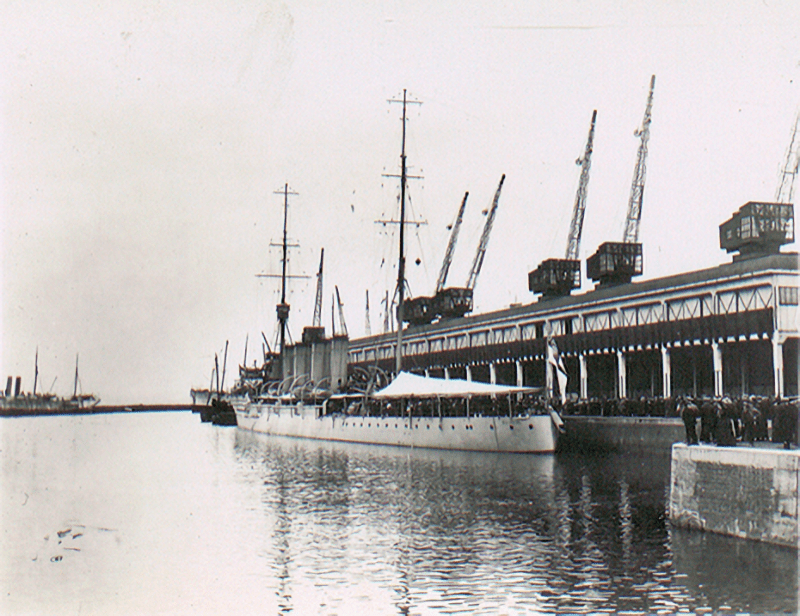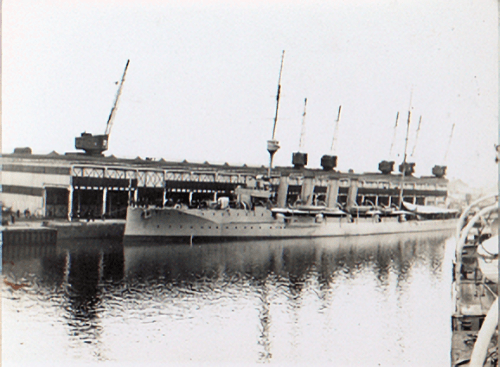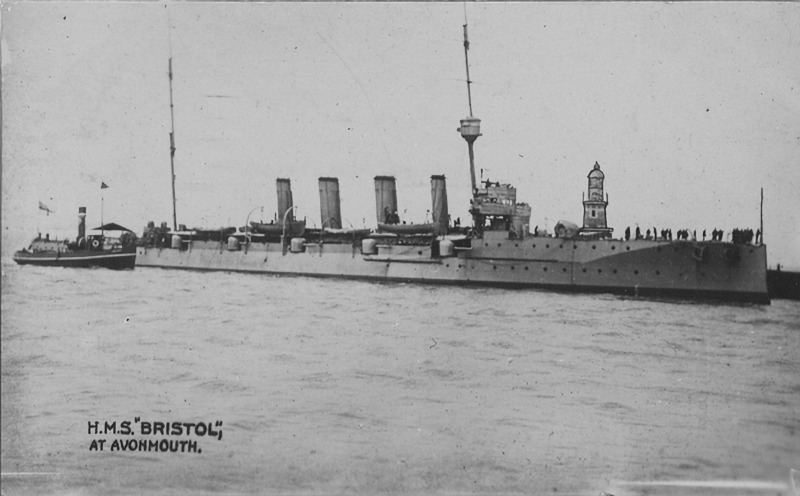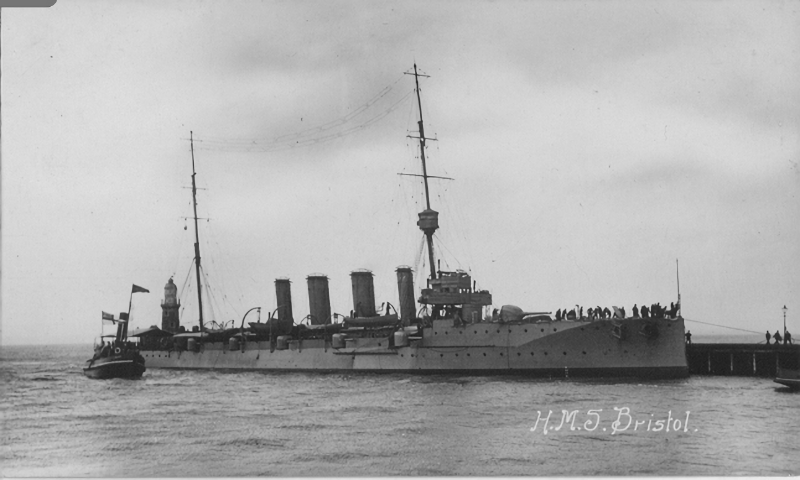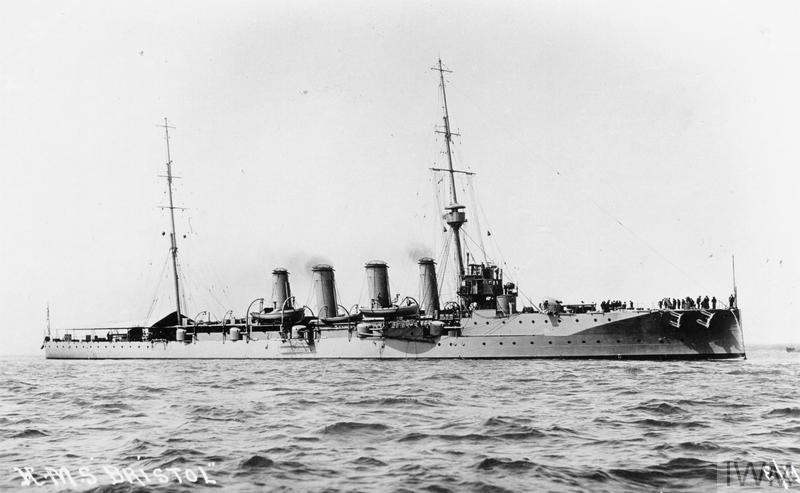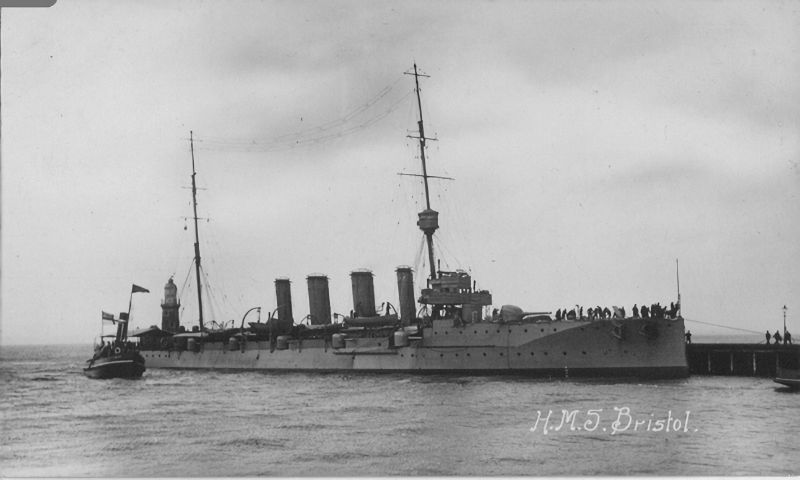British Light Cruiser HMS Bristol (1910)
HMS Bristol was the lead ship of her sub-class of the Town-class light cruisers built for the Royal Navy and was launched in 1910.
HMS Bristol was laid down on 23 March 1909 at John Brown & Company’s Clydebank shipyard, launched on 23 February 1910 and completed on 17 December 1910. She was 453 feet long with a beam of 47 feet and displaced 4,800 tons normally. The ship was powered by Brown-Curtis steam turbines driving two propeller shafts, rated at 22,000 shaft horsepower for a design speed of 25 knots, though she reached 27 knots during trials.
Her armament consisted of two 6-inch guns mounted fore and aft, ten 4-inch guns in waist mountings, four 3-pounder saluting guns, and two 18-inch torpedo tubes. The ship had an armored deck for protection, with 2 inches of armor over magazines and machinery.
World War I Service:
The ship was tasked to protect Allied shipping off the coasts of North and South America from German commerce raiders after World War I began in August 1914. In the early evening of 6 August, Bristol spotted the German light cruiser Karlsruhe, but failed to inflict any significant damage before engine problems allowed the German ship to disengage behind her own smoke.
A few months later, Bristol played a minor role in the Battle of the Falkland Islands in December by sinking some of the colliers belonging to the German East Asia Squadron. When the German squadron appeared at Port Stanley on 8 December 1914, Bristol received reports of German ships about 30 miles south and Vice Admiral Sturdee ordered her the armed merchant cruiser SS Macedonia to intercept and destroy them. The British ships were able to capture two of the German colliers (Santa Isabel and Baden) and sank them after taking off their crews.
After a lengthy refit in mid-1915, the ship was transferred to the Adriatic Force, where she participated in the Battle of the Strait of Otranto on 15 May 1917. She participated in the engagement against three Austrian light cruisers, though the action was largely inconclusive.
Bristol returned to her former task of patrolling off the east coast of South America, after a brief time escorting convoys off West Africa in early 1918, and continued to do so after the end of the war. She spent the final months of the war patrolling the Brazilian and Uruguayan coasts.
She was placed in reserve in mid-1919, and was sold for scrap in 1921.


